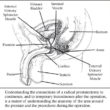An Essential Function: Pelvic Floor Physical Therapy Helps Regain Continence After Prostate Cancer Surgery
After having a radical prostatectomy, some men have problems with urinary incontinence due to changes in the pelvic floor, the group of muscles that stretches like a hammock across the base of the pelvis. Pelvic floor muscles support and control the bladder and bowel, so when the muscles are not working correctly, it can lead to incontinence. Physical therapy can help men regain continence after prostate surgery.
Traditionally, physical therapy for men after a prostatectomy has focused on strengthening a weakened pelvic floor with Kegel exercises. However, some men have overly tight pelvic floor muscles after surgery, which can also lead to incontinence.
A new study suggested that a more individualized approach to pelvic floor physical therapy would be more effective in helping men with incontinence. The study included 136 patients with urinary incontinence after having a radical prostatectomy.
Patients with weak pelvic floor muscles worked with physical therapists to strengthen their muscles. Patients with overly tight pelvic floor muscles worked on relaxation exercises. Most men in the study had both weak and tight pelvic floor muscles; these patients learned exercises to both relax and strengthen the pelvic floor.
This individualized approach to physical therapy benefited the patients; 87% had significant improvement in their incontinence. The physical therapy also resulted in men using less pads, having less pelvic pain, and gaining pelvic floor strength.

Dr. Catalona’s Opinion:
Kegel exercises were originally developed for treating stress urinary incontinence in women who have delivered babies. There are many different recommendations for Kegel exercises.
I have found the most effective method to be as follows: set your smart phone alarm to signal you at breakfast time, lunch time, dinner time and bedtime. Then, when the alarm sounds, go into the bathroom and stand at the toilet. Imagine that while you were urinating, someone opened the bathroom door, and you stopped your urinary stream. Hold the contraction for only one second. Then rest for five seconds and repeat this process for a total of 10 contractions.
Thus, you will be performing 40 Kegel contractions per day and not causing undue fatigue to your sphincter muscles.
If this approach is not successful, you may benefit from a program of pelvic floor physical therapy. Please search the website for “Kegel exercises” to learn more.













